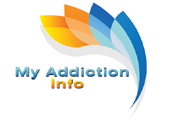
The Misuse of Opioid Painkillers
What's In This Article?
You may hear a lot about opioid painkillers, but what’s the truth about these prescription drugs? Are they even effective? As many people are finding out, the answer might be no.
From the U.S. Prohibition of Alcohol that ran from 1920 to 1933, to the start of the War on Drugs in 1971, 20th and 21st century America has almost always had a collective drug problem. Medicinal drugs most certainly have their place and we should be grateful that they do. The individuals of our time who practice medicine are far more advanced in the field than anything or anyone that’s come before them.
Sadly, drugs are a tool and they are a tool that can be, have been, and so far continue to be misused and abused. The rippling effects of such are far-reaching in even more ways than people think. The consequence of this collective misuse of drugs has manifested itself in the form of a rampant opioid epidemic. From the West Coast to the East Coast, in the North and in the South, opioids can be found in every nook and cranny.
The New Study
According to a new study, the effects of most prescription opioids prescribed to non-cancer patients is likely to be an extremely small one. The most overused drug class doesn’t even pack enough power in its punch to justify the rate of prescriptions that opioid painkillers receive. In comparison to placebos and alternative medicines, opioid painkillers only help with most pains by a very marginal effect.
Although the improvements to pain may be small, what did increase significantly was the rate of vomiting by those who were prescribed opioids to take. The side effects of opioid painkillers are more guaranteed than aiding with the pain they were prescribed for. For the average citizen, the bad in opioids will more than likely outweigh the good. There are a couple of other factors that need to be addressed in light of this new information.
Ease of Access
Part of the reason that opioids are so abused and are the cause of death of so many Americans is that of how easy they are to acquire. They have such a high prescription rate at such a high number of pills per bottle. The CDC (Center for Disease Control) urges doctors and medical professionals to cut down on the number of opioid prescriptions and to prescribe them in low doses when they are necessary for a patient to have. As evidence shows, doctors seemingly ignore this advice from the CDC.
Dependence and Addiction
So let’s suppose you’re now prescribed an opioid painkiller. After about a week or so you return to your doctor and explain to them that the medicine isn’t working. A common practice that doctors have is to raise the dosage of the medicine instead of changing your prescription to something that’s not an opioid. Now with the higher dosage, your pain might have the improvement you were expecting.
Great news right? It would be if all the opioid did was lower your pain. But with the dosage increase also came an increase of the drugs addictive properties. Now it’s more addictive since it’s more potent and BECAUSE it’s working. Now you and your doctor have nailed down the right dosage at the right time for the desired effect. And it would be great if it ended there.
But the nature of these opioids is that over time your tolerance for them will increase. So instead of taking one pill a day as originally prescribed, now you need to take two. After a while, two turns into four. Then you return to your doctor because you’re running out of pills too fast and once again, they up the dosage. You are now caught in a dependency cycle which is a step away from an addiction.
In Conclusion
Opioid painkillers and drugs similar in nature definitely have their uses but they are not without major flaw. We do not understand enough about the drugs nor our brains which they impact to justify the rate at which doctors and medical professionals prescribe them to use whilst being completely aware of the side effects attached to them. Now we have even more reason to shy aware from America’s second favorite drug.

